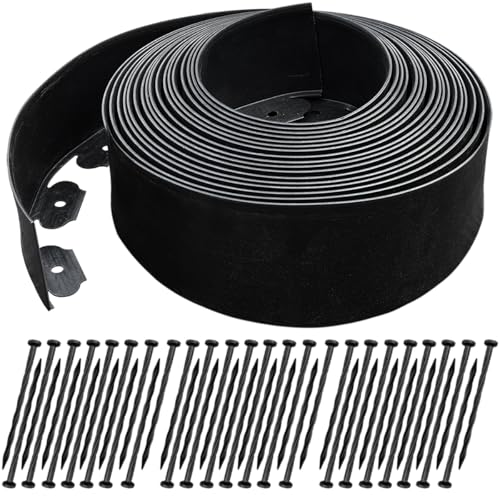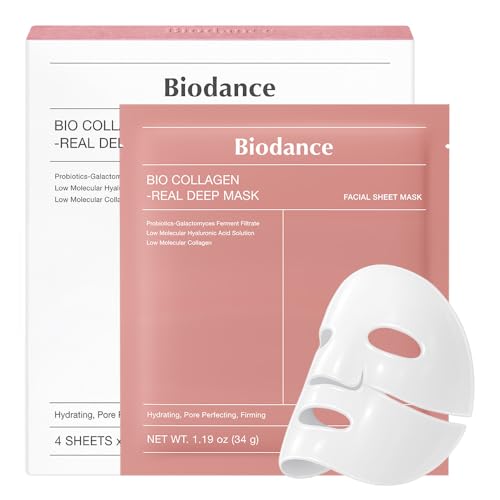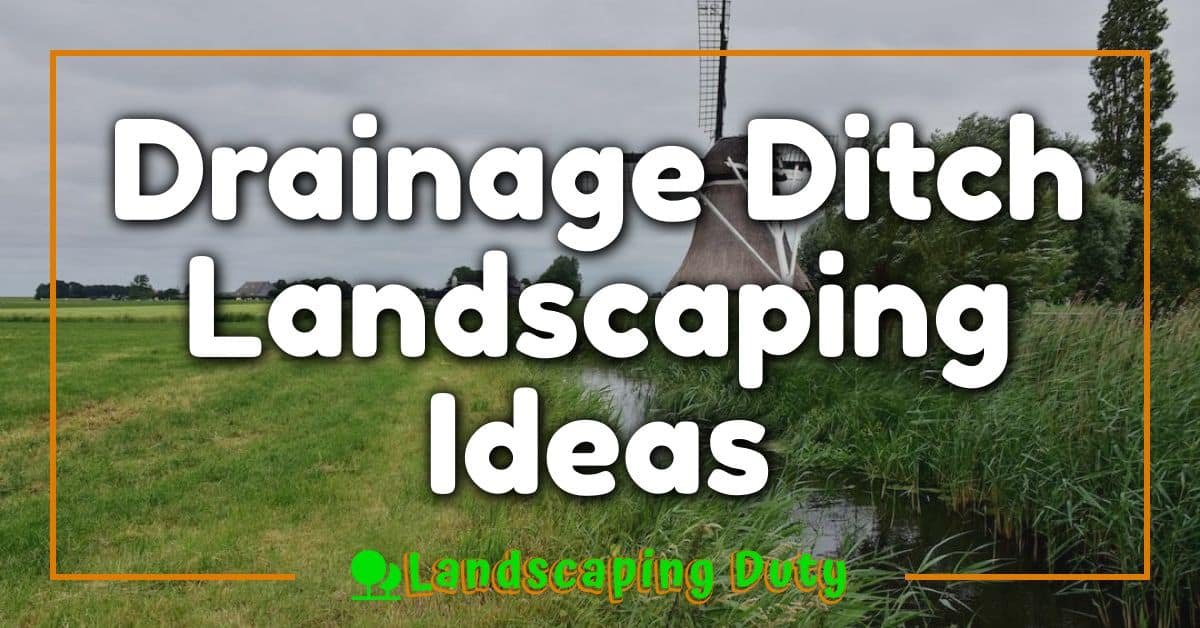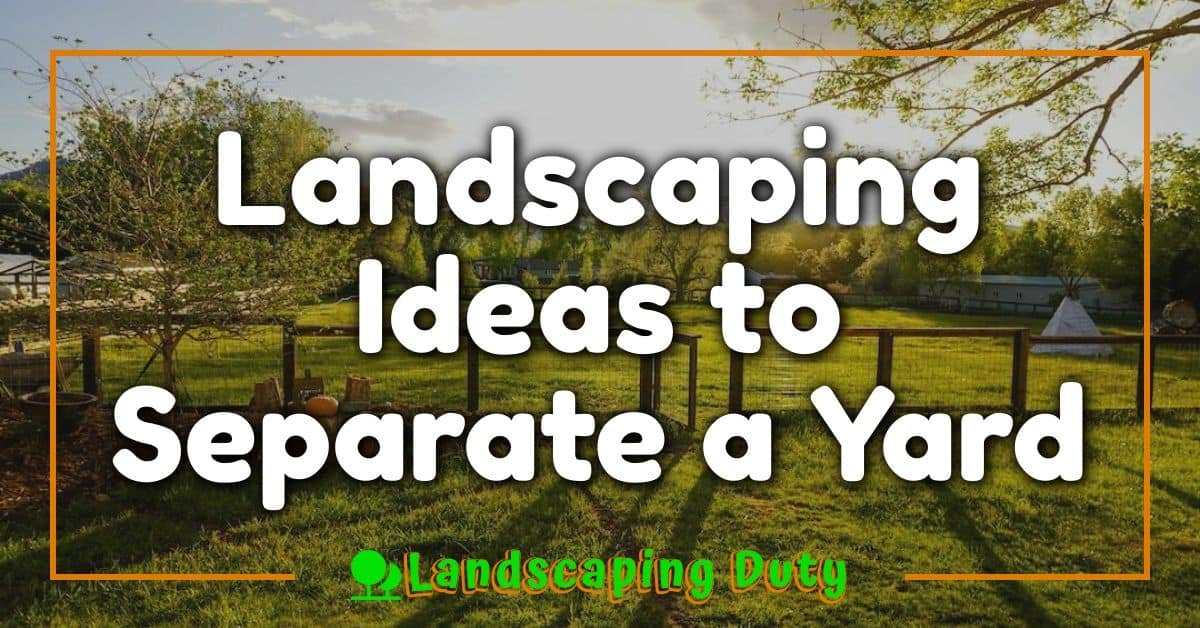Choosing the right landscape edging can make all the difference in your garden’s appearance. I’ve spent time comparing different materials to help you decide what fits best for your outdoor space.

Whether you prefer the timeless look of stone or the versatility of plastic, there are options to suit every style and budget. Each material has its own advantages, so understanding them is key.
Join me as we explore the pros and cons of various landscape edging materials to help you create a beautiful and functional garden.
Types Of Landscape Edging Materials
Selecting the right edging material enhances your garden’s look and functionality. I evaluate different types to help you choose the best fit.
Plastic Edging
Plastic edging provides an affordable option for garden boundaries. It’s lightweight, making installation quick with minimal tools. Available in colors like green, brown, and black, it suits various garden styles. Plastic edging typically lasts 5 to 10 years, depending on weather conditions.
Metal Edging
Metal edging offers a sleek, durable solution for landscape borders. Made from materials such as steel and aluminum, it withstands heavy use and resists corrosion. Metal edging ensures precise, clean lines, ideal for modern garden designs. The cost ranges from $25 to $50 per linear foot, reflecting its longevity and strength.
Stone Edging
Stone edging delivers a natural, timeless appeal to any garden. Each stone features unique textures and colors, blending seamlessly with plantings. Installation requires more effort and expertise, with prices between $15 and $30 per linear foot. Stone edging can last several decades, providing a sustainable and elegant boundary.
Factors To Consider When Choosing Edging
- Material Durability
Different edging materials offer varying lifespans. Stone lasts several decades, metal endures harsh weather, and plastic typically holds up for 5 to 10 years.
- Cost Efficiency
Budget impacts your choice. Plastic edging is the most affordable, metal falls in the mid-range, and stone requires a higher initial investment.
- Aesthetic Appeal
Select materials that enhance your garden’s style. Stone provides a natural look, metal offers a sleek appearance, and plastic comes in various colors to match different designs.
- Installation Complexity
Some materials demand more effort to install. Plastic and metal edging are generally easier to set up, while stone may require professional assistance.
- Maintenance Requirements
Consider the upkeep needed. Metal may need rust prevention, stone requires occasional cleaning, and plastic edging demands minimal maintenance.
- Environmental Impact
Choose eco-friendly options when possible. Stone and metal materials are recyclable and long-lasting, reducing environmental footprint, whereas plastic edging might raise sustainability concerns.
- Compatibility with Plants
Ensure the edging suits your plant types. Durable materials like stone and metal effectively contain aggressive plants, while flexible plastic edging works well with ornamental varieties that need gentle boundaries.
Comparison Of Popular Edging Materials
Selecting the right edging material shapes your garden’s look and upkeep. Here’s a breakdown of the top choices.
Durability
Stone edging lasts up to 50 years, providing a long-term border solution. Metal edging endures 20 to 30 years, resisting rust with proper treatment. Plastic edging typically needs replacement every 5 to 10 years due to weathering.
| Material | Lifespan |
|---|---|
| Stone | Up to 50 years |
| Metal | 20-30 years |
| Plastic | 5-10 years |
Aesthetics
Stone offers a natural, timeless appearance that blends with most landscapes. Metal provides a sleek, modern look ideal for contemporary designs. Plastic comes in various colors, allowing customization but may appear less organic.
Ease Of Installation
Plastic edging is lightweight and flexible, making it easy to install with minimal tools. Metal edging requires more precision and sturdy tools but delivers a clean finish. Stone edging demands significant labor and expertise, including leveling and securing heavy materials.
Cost Considerations
When planning my landscape project, I evaluate the initial costs and long-term investments for different edging materials. Understanding these financial aspects helps me make informed decisions that align with my budget and desired durability.
« LED vs. Traditional Garden Lighting: Pros, Cons & Best Choices for Your Outdoor Space How to Hire for Tree Transplanting: Essential Steps for Success »
Initial Material Costs
The price of edging materials varies significantly:
| Material | Cost per Linear Foot |
|---|---|
| Plastic | $1 – $3 |
| Metal | $5 – $15 |
| Stone | $10 – $30 |
Plastic edging offers the most budget-friendly option, suitable for large gardens. Metal edging costs more but provides enhanced durability and a sleek appearance. Stone edging requires the highest investment, reflecting its natural beauty and longevity.
Installation Expenses
Installation costs depend on material and labor requirements:
- Plastic: DIY-friendly, minimal tools needed, reducing overall expenses.
- Metal: Requires precise installation techniques, potentially increasing labor costs.
- Stone: Demands significant labor and expertise, leading to higher installation fees.
Choosing a material that aligns with my DIY skills can help manage installation costs effectively.
Maintenance and Longevity
Considering maintenance costs and lifespan is crucial for long-term budgeting:
| Material | Lifespan | Maintenance Needs |
|---|---|---|
| Plastic | 5 – 10 years | Occasional repairs or replacements |
| Metal | 20 – 30 years | Minimal upkeep, occasional cleaning |
| Stone | Up to 50 years | Rare maintenance, mostly structural checks |
Plastic edging requires frequent replacement, increasing long-term costs. Metal edging offers a balance between durability and maintenance, while stone edging stands out with minimal maintenance needs, justifying its higher initial price over time.
Total Cost of Ownership
Evaluating the total cost involves combining initial costs, installation, and maintenance:
- Plastic: Lower upfront costs but higher long-term expenses due to shorter lifespan.
- Metal: Moderate initial and maintenance costs with a longer lifespan.
- Stone: Highest upfront investment but the lowest maintenance costs over time.
Balancing these factors helps me choose the most cost-effective material that meets both my financial constraints and landscaping goals.
Installation And Maintenance
Understanding the installation process and maintenance requirements is crucial for selecting the right landscape edging material.
Installation
- Plastic Edging: Installing plastic edging is simple. I use basic tools like a shovel and stake hammer. Typically, it takes a few hours to outline a standard garden bed.
- Metal Edging: Metal edging requires more precision. I often need specialized tools such as metal cutters and a post-hole digger. Professional installation ensures a secure and sleek finish.
- Stone Edging: Stone edging installation is labor-intensive. It involves heavy tools like masonry saws and chisels. Depending on the garden size, installation can take a full day or more.
Maintenance
| Material | Maintenance Requirements |
|---|---|
| Plastic | Periodic checks for damage or shifting. Replace sections as needed. |
| Metal | Minimal upkeep. Prevent rust by keeping metal dry and clean. Inspect for stability annually. |
| Stone | Low maintenance. Occasionally clean stones and reposition if necessary. |
Choosing the right material ensures ease of installation and manageable maintenance, keeping your landscape looking its best year-round.
Conclusion
Choosing the right landscape edging truly transforms my garden into a stunning space. Each material offers its own charm and benefits, making it easier to find something that fits my style and budget. Whether I go for the natural elegance of stone or the modern touch of metal, I know my outdoor area will look cohesive and well-defined.
I love the flexibility plastic edging provides, especially for seasonal projects or colorful accents. It’s reassuring to know there are so many options to suit different needs and preferences. Ultimately, finding the perfect edging material makes all the difference, allowing me to create a beautiful and functional garden that I can enjoy for years to come.






![Landscape Edging 33FT,Garden Edging Borders [Extra Tall 4IN High] Flexible](https://m.media-amazon.com/images/I/41aPsdwWpmL._SL500_.jpg)









